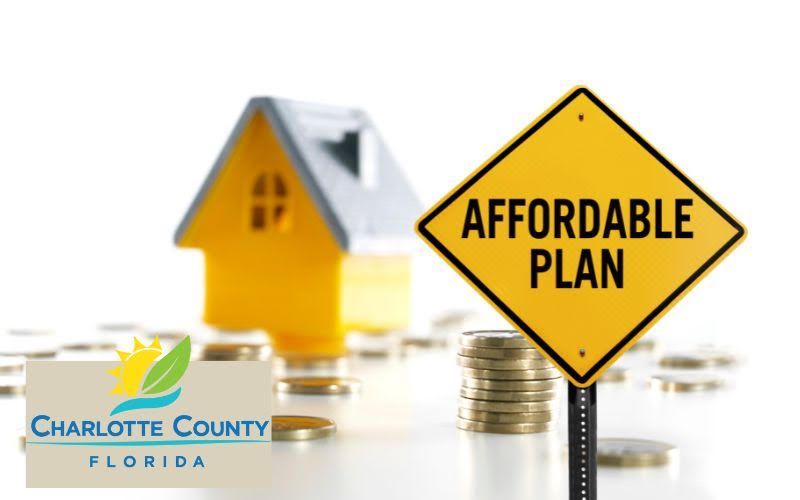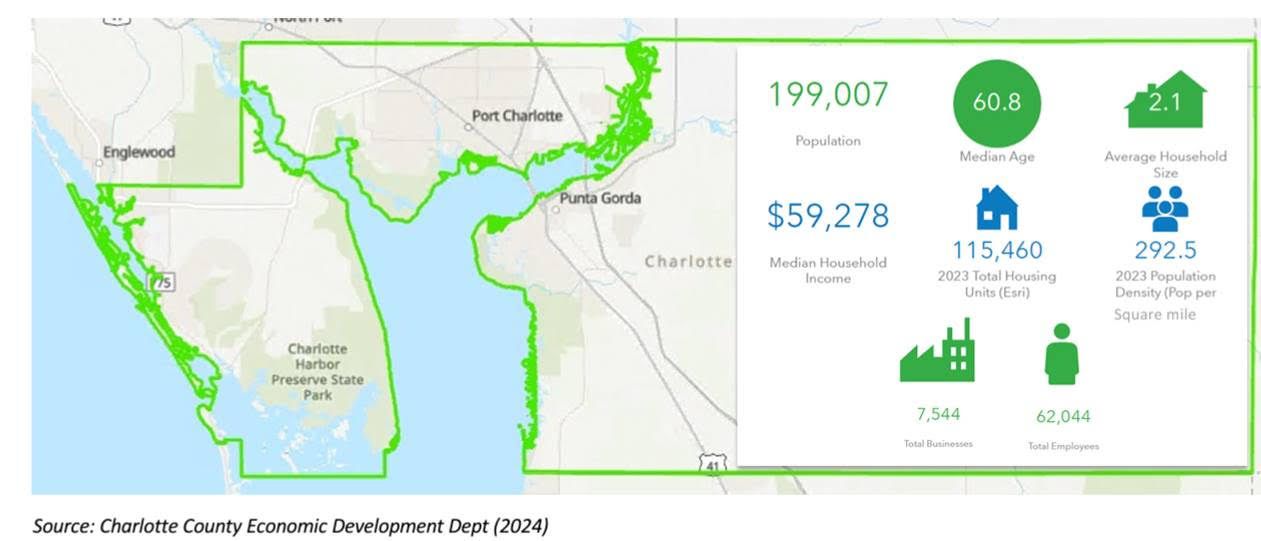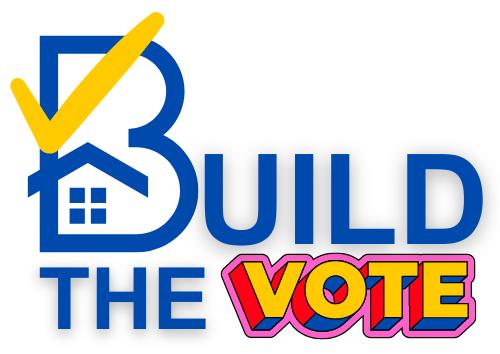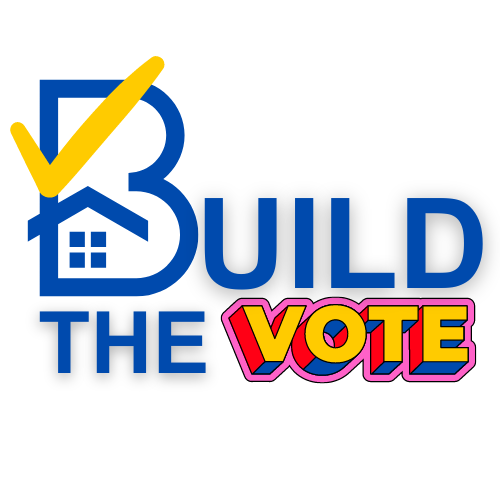
Housing We Can Live In
Affordable housing. Attainable housing. Workforce housing. Low Income housing. Subsidized housing. Whatever it is called, many just want housing that they can pay for with the money they earn. For the sake of all terms, this article will use the term “housing for all”
So, before we fix it, we need to understand how we got where we are!
In 1955, Charlotte County Florida had a population of 5,347. Charlotte Harbor, Englewood and Punta Gorda and even Murdock were towns that started building life, but what really catapulted Charlotte County was the sale of AC Frizell’s 80,000 acres of land to Florida Canada Company/Chemical Research Corporation/General Development Company/Mackle Brothers.
This triggered waterfront property to be purchased by Grove City Shores on Oyster Creek, and another huge transaction for 467 acres in South Punta Gorda and a Harbor Heights Development to pop up and of course the selling of swamp land to build what we now know as Punta Gorda Isles.
After the sale of Frizzell’s farm, General Development Corporation purchased 6,288 acres, General Development sold 200 homes the first year. Unlike many communities, GDC had a vision of selling land to northerners for their dream of living in Florida after they retire. For $10 down and $10 a month, they can own their land and build when they are ready to come down and enjoy the warmth and sunshine. For many, this reality never happened.
How did we have the housing we needed earlier on?
GDC built many duplexes in Port Charlotte, specifically in the area known as Parkside. Residents would live on one side of the home and rent out the other side. This helped many people in the workforce find solutions until they decided to purchase a home. For some, when someone who had a second home in Port Charlotte decided to stop coming down for the winter, property managers would supervise these homes and rent them to locals. Many residents also took the opportunity to purchase homes and rent them out as investment properties.
In 1957, PGI Development was opened and began dredging the 550 acres of mangrove swamps in Punta Gorda to turn it into approximately 7,000 waterfront properties now known as Punta Gorda Isles (PGI). PGI would offer a more upscale homes, mostly waterfront with large canals. Then would come Deep Creek Community, and Burnt Store Isles.
Charlotte County would continue to grow. By 2004, 93,724 homes were built.
Charlotte County planning was smart, marking lots for what would make sense to ensure our community had the combination of residential and commercial. Click here to see the Future Land Use.

On August 13th, 2004 Hurricane Charley hit Charlotte County after a last minute turn. There was an expected 80,000 rooftops that were damaged at that time. This brought major investors into our community to purchase homes that were damaged and many turned these homes into rentals.
Then the recession. The number one reason we are in a need for housing is because of the recession.
From 1955-2004, there were 93,724 homes built in Charlotte County. During the recession, Charlotte County only 3,498 homes were built from 2008-2015. There was no commercial, no multi housing, no homes being built.
Even without an influx of people moving to our community, there is still a deficit of housing. New homes open the doors for existing homes to be sold, or rented in many cases at lower prices which helps with housing for all. Even with the increase in new homes we have seen in recent years, we are still lagging
Charlotte County Permits Issued
Notice the significance increase from year 2008 through 2016
| Fiscal Year | # of Single Family Permits |
|---|---|
| 1999 | 1114 |
| 2000 | 1216 |
| 2001 | 1664 |
| 2002 | 1458 |
| 2003 | 1875 |
| 2004 | 1591 |
| 2005 | 2118 |
| 2007 | 3409 |
| 2008 | 1188 |
| 2009 | 319 |
| 2010 | 270 |
| 2011 | 232 |
| 2012 | 275 |
| 2013 | 269 |
| 2014 | 394 |
| 2015 | 551 |
| 2016 | 824 |
| 2017 | 1024 |
| 2018 | 1607 |
| 2019 | 1794 |
| 2020 | 2234 |
| 2021 | 3014 |
| 2022 | 4165 |
| 2023 | 3329 |
According to the Charlotte County 2050 Master Plan, “119,090 housing units are needed by 2025”. According to the 2020 census, there were only 110,046 housing units.
In 2018, stakeholders got together with Together Charlotte. This group met extensively to see how our community could tackle the need for housing for all. “By 2025, Charlotte County needs to add 10,918 housing units to keep pace with the projected demand.“
These numbers were before ….
The storm after the storm after the storm
While there has always been a need for housing for all. We have been able to manage with our ever shifting population. Retirees passing away and storms have opened up more homes that would become rentals. And this would change in 2020.
When COVID hit our world, Florida was one of the states that went back to work earlier on. For those who couldn’t afford to live in bigger cities and were missing out on working, they came to find a new life in our state. While most businesses would be open within 3 months, federal laws prevented anyone from being evicted from their home for nonpayment. So when investors were contacted to sell their home, for a price higher than they were making, they sold the homes.
Some companies were investors who purchased homes to rent. But having a high mortgage, plus higher insurance and higher taxes, the rent for the homes had to be higher to cover the inflated regulation.
In 2021, we also saw huge increases in building supply prices, which caused big increases on building residential homes and the prices continue to rise as of today.
In 2022, our area was devastated by Hurricane Ian, which vastly affected the affordable areas of our community such as Parkside, RV parks and mobile homes and Englewood. Many people needed to find new housing until these homes could be fixed.
Regulatory fees are at the highest. According to a study by the National Association of Home Builders, in 2024, the regulatory costs of a single family homes is $93,870 versus $35,872 in 2020.
So how do we find solutions for housing for all?
Construction is a business. Investors must choose our community. Some incentives they look for are prices, ability to expedite the building process and community support.
And by 2023, According to Charlotte County Economic Development has only added 5,414 new homes. This leaves us with a deficit of 5,504 homes to match the needs our leaders felt we needed in 2018!

But I don’t want that there!
For some, they chose the home they did because there were empty lots next to the home. Some then get upset when someone builds on the homes. If all research these lots, all will see they are owned by private individuals, or private companies. Search the Charlotte County Appraiser website to see who owns the lot in question. In accordance with Section 163.3177(6)(i) of the Florida State Statute: governmental entities respect judicially acknowledged and constitutionally protected private property rights. This means the owner of the property can anything that the property is zoned for.
Private Public Partnerships
Private Public Partnerships (PPP) are one of the most innovated and productive ways to get investors to build housing for all. This is when the government works on relieving some of the regulation so that the investor can still pay employees to build the housing and offer rents at a lower price.
A recent example of a PPP for housing for ALL is the Jacaranda Place on Loveland Blvd. in Port Charlotte. The rent average medium income (AMI) is 40%-60%. Click here for a better understanding of AMI. This initiative was made possible through several funding partners, including the Florida Housing Finance Corp., Raymond James Affordable Housing Investments, TD Bank and Charlotte County.
There are other projects in the works:
- Bachmann Trail
- Murdock Village
- Punta Gorda Housing Authority
There are other solutions for helping our neighbors be able to be secure and getting to buy a home:
Florida Housing Finance Corporation for first time homebuyers
Charlotte County Habitat for Humanity
SHIP (State Housing Initiatives Programs

